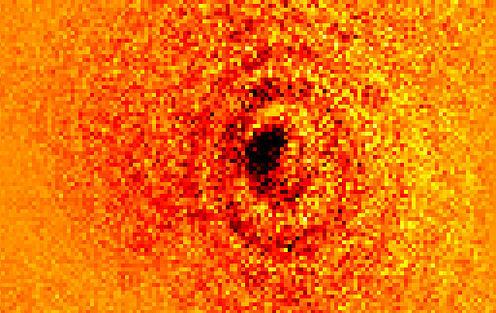World’s first single-atom photo
July 15, 2012
A Griffith University research team has been able to photograph the shadow of a single atom for the first time.
“We have reached the extreme limit of microscopy; you cannot see anything smaller than an atom using visible light,” Professor Dave Kielpinski of Griffith University’s Centre for Quantum Dynamics in Brisbane.
“We wanted to investigate how few atoms are required to cast a shadow and we proved it takes just one,” Professor Kielpinski said.
At the heart of this Griffith University achievement is a super high-resolution microscope, which makes the shadow dark enough to see. No other facility in the world has the capability for such extreme optical imaging.
Professor Kielpinski and his colleagues trapped single atomic ions of the element ytterbium and exposed them to a specific frequency of light. Under this light the atom’s shadow was cast onto a detector, and a digital camera was then able to capture the image.
“If we change the frequency of the light we shine on the atom by just one part in a billion, the image can no longer be seen,” Professor Kielpinski said.
“Such experiments help confirm our understanding of atomic physics and may be useful for quantum computing,” Dr. Erik Streed said. There are also potential follow-on benefits for biomicroscopy.
“Because we are able to predict how dark a single atom should be, as in how much light it should absorb in forming a shadow, we can measure if the microscope is achieving the maximum contrast allowed by physics.”
“This is important if you want to look at very small and fragile biological samples such as DNA strands, where exposure to too much UV light or x-rays will harm the material.
“We can now predict how much light is needed to observe processes within cells, under optimum microscopy conditions, without crossing the threshold and destroying them.”
